Cable news dismissed and ridiculed inauguration protesters
During January 20 inauguration coverage, hosts and commentators on CNN, MSNBC, and FOX News ridiculed inauguration protesters; downplayed their numbers and significance; and implied that they posed a security threat.
CNN host Wolf Blitzer seemed to ignore fellow host Judy Woodruff's point that parade watchers generally had to pay for seats (and therefore likely supported President Bush), asserting that in contrast with the protesters -- whom he called "angry, angry people" -- "there are a lot more people who have gathered along Pennsylvania Avenue who love this president."
Later, Blitzer again downplayed the protesters' significance: "And we don't want to make too much of the protesters, because we don't know how many there were. Certainly, the nature of this business, the nature of television, we could over-exaggerate based on the images, and they might just be a tiny, tiny overall number." A January 21 New York Times article rebutted Blitzer's assessment, noting that the number of protesters in the protest-designated space alone was in the "thousands," and that there were also protesters interspersed with Bush supporters throughout the parade route: "The numbers of protesters along Pennsylvania Avenue might have been greater, but the swarm of people trying to pass through security checkpoints made it hard to reach the parade route quickly."
As the Bushes' limousine passed the designated protester area, CNN guest and Harvard University historian Barbara Kellerman remarked: "I doubt very much they [the Bushes] are taking the protesters very seriously at this point. I think they are celebrating the moment. And I must say, who can blame them?"
On FOX News, homeland defense correspondent Catherine Herridge also downplayed the number of protesters, stating that of those associated with the protest coalition Act Now to Stop War and End Racism (ANSWER) "only a few dozen people have shown up." But The New York Times reported that the ANSWER-led coalition "filled [the protest-designated space] with thousands of people who were as close to Mr. Bush as those who came to cheer him."
HERRIDGE: This is the designated site for an anti-war group that's called ANSWER. That's an acronym for Act Now to Stop War and End Racism. This has been billed as the largest demonstration. It's sort of early days, but you can see with your own eyes that only a few dozen people have shown up. ANSWER had told the park police they were expecting somewhere in the area of 10,000. While they're demonstrating against the administration's policies -- both domestic and foreign -- there are groups today that will be demonstrating in support of the president. The D.C. chapter of [conservative online forum] Free Republic will be here supporting the president and also our troops overseas, and they told the park police they were expecting somewhere around 1,000 people.
Later, FOX News host, managing editor, and chief Washington correspondent Brit Hume, observing the presidential motorcade leaving the White House on its way to the Capitol, called the protesters not "very important":
HUME: We'll keep an eye out as well for protesters along the way. They've been granted more access in some cases than is usual to the spots along Pennsylvania Avenue. So we'll keep an eye out for any of that. It isn't very important, but it's kind of interesting, and it's sort of typical of this country that you'd have this grand celebration of the second term of a new president, and dissenting voices have a spot in all of it.
On CNN, national correspondent Bob Franken linked increased security to the protesters:
Of course, the inauguration brings with it pageantry. But since September 11, 2001, it has met intense, unbelievable security and an angry nation. The protesters are set up in various spots. One of the authorized ones is right in back of me. ... The police forces are probably going to outnumber the demonstrators. They are part of a security effort -- most of which we're seeing, highly visible, some of which we're not -- which is designed to allow this to be a national security event that becomes a celebration, as opposed to something that would be unthinkable.
On MSNBC, Washington Times editorial page editor Tony Blankley ridiculed animal rights organization People for the Ethical Treatment of Animals (PETA), calling them, "People Eating Tasty Animals." Blankley's comment came as he, MSNBC host Chris Matthews, and MSNBC contributor and analyst Monica Crowley discussed the fur coats some wore to inaugural events:
MATTHEWS: I guess there's no -- what do they call it, PETA? -- they're not around.
CROWLEY: And I like all the fur-lined Stetsons.
BLANKLEY: PETA, isn't that People Eating Tasty Animals?
MATTHEWS: I don't think so at all. I'd be very careful, Tony.
Copyright © 2004-2005 Media Matters for America.



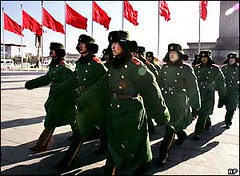
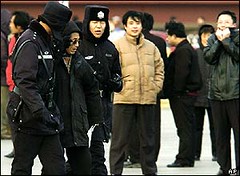
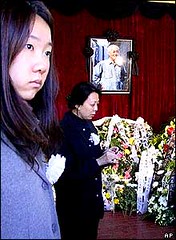


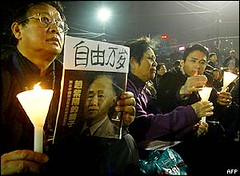
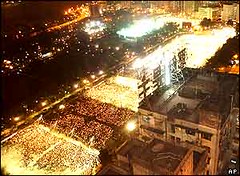



















 and may, in fact, represent her and two companions. Magu, whose name means "Hemp Lady," is usually shown with fingernails like talons, her identifying attribute. Her legend dates back to at least the fourth century A.D., and she is best known for her longevity. In later times, her image became popular on birthday presents for women.
and may, in fact, represent her and two companions. Magu, whose name means "Hemp Lady," is usually shown with fingernails like talons, her identifying attribute. Her legend dates back to at least the fourth century A.D., and she is best known for her longevity. In later times, her image became popular on birthday presents for women.

